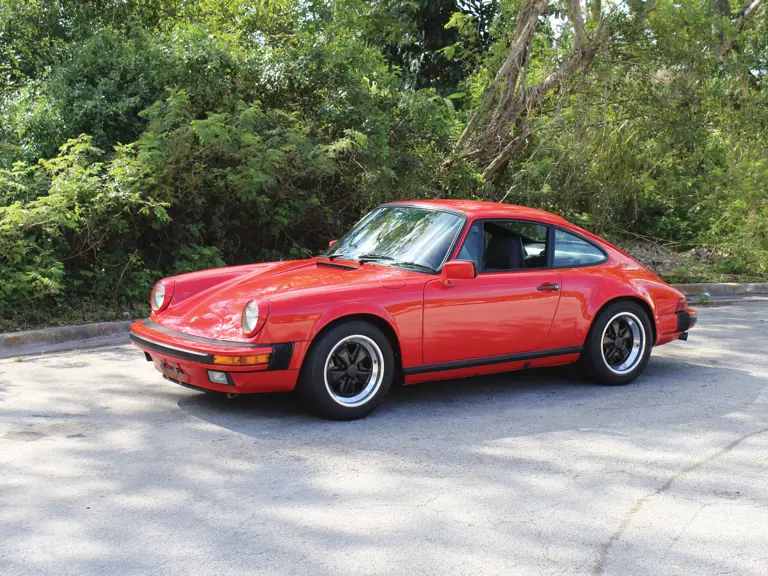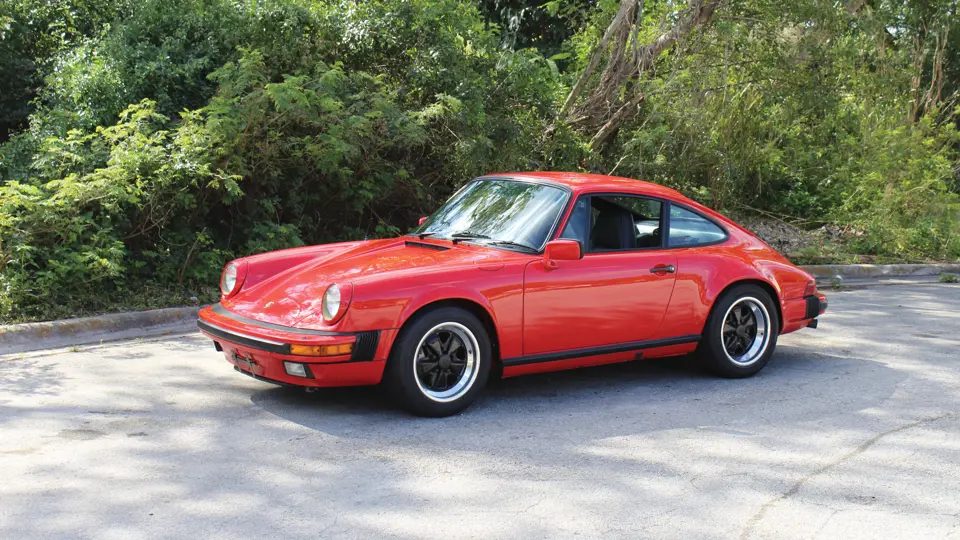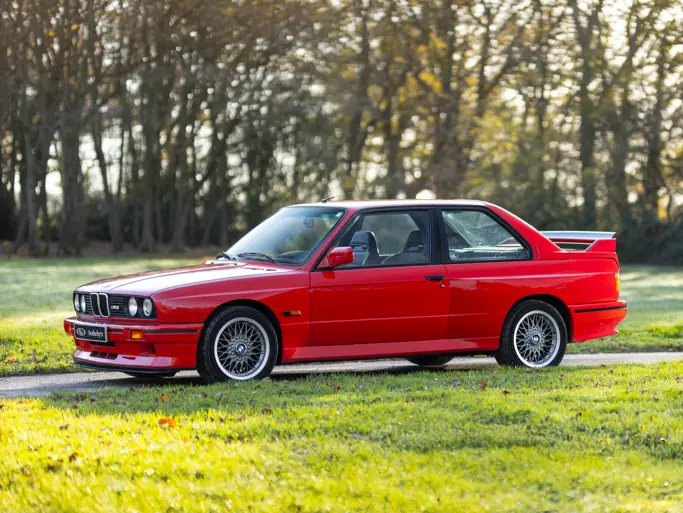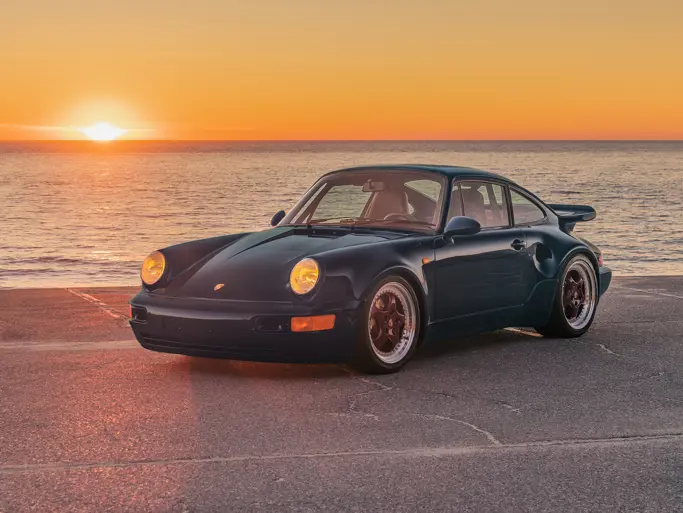Porsche’s legendary 911 began with initial sketches by Ferdinand Porsche in 1959, which illustrated a larger, more powerful, and more comfortable successor to the 356. Ferdinand Porsche developed the chassis and body, while his cousin Ferdinand Piech developed its air-cooled “flat six.” With a slightly longer wheelbase, the new Porsche debuted at Frankfurt in 1963 as the “901.” However, following Peugeot’s objections to the name, claiming rights to all three-digit car names with a zero in the middle, a simple change heralded the “911.”
Nineteen eighty-four saw major changes for the 911; Porsche introduced a new and more powerful 3.2-liter engine that they claimed was 80-percent new. The same 915 five-speed manual transmission from the SC was used in the new 3.2 until 1987 and power increased to 207-hp for North American models. Braking and cooling were improved with the addition of larger brake discs and finned oil cooler.
This 911 Carrera Coupe is finished in red over a well-preserved black leather interior. This is reported as a well-kept original car that also “runs and drives well.” Nicely appointed, this 911 Carrera runs with the 3,165-cc, 200-hp flat six with a five-speed manual transmission, and it has a power sunroof, air conditioning, black Fuchs wheels, Blaupunkt stereo system with cassette, dual sideview mirrors, space-saver spare tire; power windows, steering and four-wheel disc brakes. This is a popular model that experienced strong sales; Porsche produced 35,571 911 Carrera Coupes during its 1984 to 1989 production run.
Over 50 years after its introduction, the same fascinating basic shape of the 911 remains in production, and it is as popular today as when it was first manufactured. Simple beginnings led to the 911 being one of the most recognized performance sports cars on the planet. Loved by sports driving enthusiasts to some of the best racecar drivers in the world; the Porsche 911 is a car that needs little introduction.



 | Fort Lauderdale, Florida
| Fort Lauderdale, Florida


